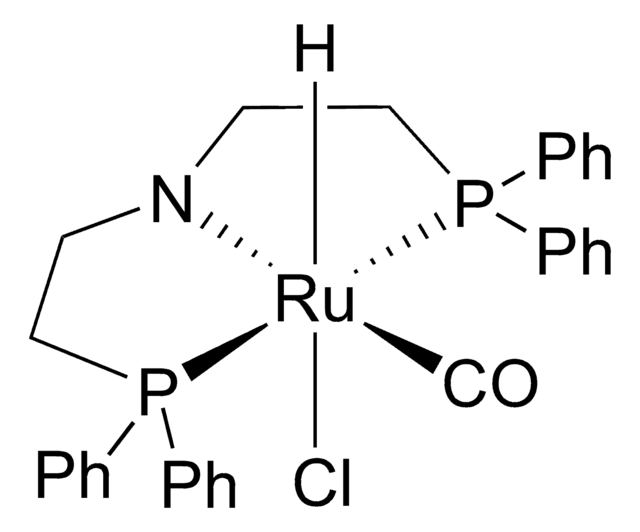701920
2-((Di-tert-butylphosphinomethyl)-6-diethylaminomethyl)pyridine
Sinónimos:
PNN
About This Item
Productos recomendados
formulario
liquid
idoneidad de la reacción
reaction type: Buchwald-Hartwig Cross Coupling Reaction
reaction type: Heck Reaction
reaction type: Hiyama Coupling
reaction type: Negishi Coupling
reaction type: Sonogashira Coupling
reaction type: Stille Coupling
reaction type: Suzuki-Miyaura Coupling
reagent type: ligand
índice de refracción
n20/D 1.519
densidad
0.936 g/mL at 25 °C
grupo funcional
phosphine
cadena SMILES
CCN(CC)Cc1cccc(CP(C(C)(C)C)C(C)(C)C)n1
InChI
1S/C19H35N2P/c1-9-21(10-2)14-16-12-11-13-17(20-16)15-22(18(3,4)5)19(6,7)8/h11-13H,9-10,14-15H2,1-8H3
Clave InChI
MTBWGMDPQBSPGF-UHFFFAOYSA-N
Palabra de señalización
Warning
Frases de peligro
Consejos de prudencia
Clasificaciones de peligro
Aquatic Chronic 4 - Eye Irrit. 2 - Skin Irrit. 2 - STOT SE 3 - Water-react 3
Órganos de actuación
Respiratory system
Código de clase de almacenamiento
4.3 - Hazardous materials which set free flammable gases upon contact with water
Clase de riesgo para el agua (WGK)
WGK 3
Punto de inflamabilidad (°F)
154.0 °F
Punto de inflamabilidad (°C)
67.8 °C
Equipo de protección personal
Eyeshields, Faceshields, Gloves, type ABEK (EN14387) respirator filter
Certificados de análisis (COA)
Busque Certificados de análisis (COA) introduciendo el número de lote del producto. Los números de lote se encuentran en la etiqueta del producto después de las palabras «Lot» o «Batch»
¿Ya tiene este producto?
Encuentre la documentación para los productos que ha comprado recientemente en la Biblioteca de documentos.
Nuestro equipo de científicos tiene experiencia en todas las áreas de investigación: Ciencias de la vida, Ciencia de los materiales, Síntesis química, Cromatografía, Analítica y muchas otras.
Póngase en contacto con el Servicio técnico










